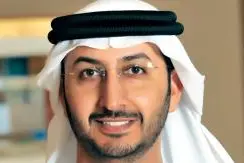PHOTO
UNCTAD's World Investment Report 2015: "Total stock of Foreign Direct Investment into Latin America and the Caribbean rose from $107 million in 1990 to $1.9 billion in 2014"
Dubai, UAE, 20 December 2015
The 'Foreign Direct Investment in Latin America and the Caribbean' 2015 report published by Economic Commission for Latin America and the Caribbean (ECLAC) showed that Mexico recorded inflows of US$ 22.795 billion in 2014. Brazil continues to be the largest recipient of FDI in the region, though inflows US$ 62.495 billion, while Chile remains the third largest recipient of FDI with US$ 22.002 billion, up 14% on 2013. The biggest increases in the region were reported by Barbados (5,119%), Paraguay (230%) and Antigua and Barbuda (66%).
These statistics demonstrate the potential for fruitful cooperation that could be explored between the Middle East and Latin America in light of an international race for investment in the South American continent by many emerging and developed markets, according to the Annual Investment Meeting 2016, the world's largest Foreign Direct Investment (FDI) - focused event
A delegation of the Annual Investment Meeting (AIM) 2016 Higher Organising Committee visited Latin American countries to discuss ways of cooperation with decision makers from the private and public sectors.
The delegation called for building investment bridges between south America and other emerging markets, especially the Middle East and North Africa, spurred by the high global demand for investment in Latin America.
The aim of the visit was to open communication channels with decision-makers and companies operating in various trade and manufacturing sectors in Latin America countries to direct focus on AIM 2016 which is scheduled to take place between April 11 to 13, 2016 under the patronage of HH Sheikh Mohammed Bin Rashid Al Maktoum, UAE Vice President, Prime Minister and Ruler of Dubai at the Dubai International Convention and Exhibition Centre.
The visit comes on the heels of a series of reforms in the Latin America energy sector that would expand the vast and strategic investment opportunities between the MENA region and South American countries, especially considering that the total stock of FDI coming into Latin America rose from about USD 107 million in 1990 to USD 1.9 billion in 2014, according to World Investment Report 2015 published by the United Nations Conference on Trade and Development (UNCTAD).
The ECLAC report said that as a share of GDP, FDI inflows in Latin America and the Caribbean stood at 2.6%. Smaller economies generally have high FDI-to-GDP ratios, with economies in the Caribbean regularly reaching levels as high as 10% of GDP. Larger economies typically have much lower ratios, for instance 1.5% of GDP in Brazil1 and 2.0% of GDP in Mexico.
During the three-week visit delegates discussed through a series of meetings the development in various economic sectors of Latin America in recent years and the plethora of opportunities and potential available.
"The Higher Organising Committee of AIM 2016 is going the extra mile to bring key investment sectors into the ambit of the next edition of AIM," said His Excellency Abdullah Bin Ahmed Al Saleh, Undersecretary of the Ministry of Economy - Foreign Trade sector and Chairman of AIM's Higher Organising Committee. "We are delighted with the interest of companies and institutions from the Latin America region to participate at the event, thanks to the great efforts of the committee."
"We hope this visit will yield positive results as we fully understand the unique investment strengths of countries in Latin America, such as the abundance of raw materials and energy sources, which are major triggers of FDI inflow and outflow," added Al Saleh.
Mr. Dawood Al Shezawi, CEO, AIM's Organising Committee said many of the companies they met are keen to establish a foothold in the emerging markets, especially Middle East and North Africa . "Latin American companies are keen to tap investment opportunities and understand the role of investment forums like AIM in achieving this goal. Our roadshow in Latin America has paid off, and we anticipate quality participants in the next edition of AIM," added Al Shezawi.
"Many companies in Latin American countries seek to find international partners, while ensuring financial support for infrastructure projects and development in their countries. For instance, the energy sector in the Latin American region is expanding, and there are efforts to conduct systematic studies on energy and ways to reduce carbon emissions in Brazil. We at AIM work to attract companies seeking green solutions to showcase the UAE experience in energy sector and give practical solutions to their markets," added Al Shezawi.
The technology intensity of FDI in the region is increasing: FDI in medium-high and high technology sectors now accounts for some 60% of total inflows, although with large differences between countries.
With respect to the source countries of investment, the ECLAC report said that the Netherlands is now the largest investor country in Latin America, accounting for 20% of inflows that can be attributed to source countries. This chiefly reflects the Netherlands' position as by far largest investor in Brazil, since it is the source of 29% of flows into that country. The United States was responsible for 17% of inflows during 2014. Its investments account for a large share of total FDI in Mexico (29%), Colombia (14%) and Central America (33%). Spain is the third largest investor in the region, having nearly quadrupled its share to 10%. Spain has a particularly strong presence in Mexico (18%), Colombia (13%) and some of the Central American economies. Two large acquisitions by Spanish companies in 2014 are evidence of the recovery of Spanish inflows after several years of weak inflows. Official FDI from Asia to the region is minimal, accounting for some 6% of total flows in 2014, of which one sixth comes from China.
Latin America presents vast collaboration opportunities in areas such as oil and gas, hydro and nuclear energy, production of airplanes and helicopters and infrastructure, as well as information technologies and bio-pharmacy. "Countries such as Chile and Colombia prefer free-market economy and are seeking to attract FDI, while countries such as Venezuela and Bolivia look towards strengthening government investments in economic sectors in their countries. We have studied this situation carefully and tried to contact the right parties in each country for highlighting new and exclusive investment opportunities during AIM 2016," said Al Shezawi.
Transnational corporations have very significant --and still growing-- presence in Latin American and Caribbean economies. Transnational corporations played a major role in establishing certain consumption and production patterns.
With reference to the same ECLAC report Latin America region has attractive factors for FDI, with a focus on sectors like natural resources, oil and natural gas, mining, manufacturing, and transport infrastructure. Also air traffic to Latin America and the Caribbean is on a strong growth path, with recent figures showing that the region has the second highest growth of any region at an annual rate of 8.2%. This is reflected in the number of airport construction projects in the region: 318, according to the Centre for Aviation, in Latin America alone, which is 13.6% of all projects worldwide.
Finally, electricity generation is the fourth largest services sector in Brazil, with inflows of US$ 2.291 billion. In Mexico, by contrast, inflows to the sector remained low, but a significant legislative change is likely to open up the sector to major investment in the coming years, including an announced US$ 5 billion investment by Spanish electricity giant Iberdrola. In other economies, particularly in Central America, Chile and Uruguay, it is the renewable energy sector that is at the centre of attention, with numerous new wind farms and solar plants under construction.
Walid Farghal, Director General, Annual Investment Meeting (AIM) Organising Committee, showcased business and investment opportunities and efforts being made to improve the business climate.
"Annual Investment Meeting is a bridge that links economies with investments around the globe. With regard to the FDI in Latin American, there is no reason for the Middle East not to the acquire a share of the investment in Latin America following the examples of the Netherlands, the United States, Spain and China. At AIM, we are working to facilitate this type of investment between the Middle East and emerging markets, including Latin America," said Farghal.
"AIM is considered an economic and investment bridge to the world, especially since the UAE has become a global economic magnet. It provides an ideal platform to directly communicate with organisations, investment institutions, investors and government delegations. There will be dedicated sessions in different investment fields, such as industry, education, technology and energy as well as workshops and panel discussions featuring FDI experts," added Farghal.
Al Shezawi, stressed that Dubai had become a major gateway to major global business networks across Latin America, Africa, and Asia, as it occupies a strategic location that serves as a meeting point of three continents.
Al Shezawi added that more than a third of the world is close to the Indian Ocean region, with Dubai serving as a financial meeting ground for their trade and transactions. The emirate has also strengthened its leadership position as a hub for companies investing in Africa, and it is home for major multi-national companies.
It is worth mentioning that China has recently announced plans to increase its FDI in Latin America to reach 250 billion dollars in the coming 10 years. This cooperation is anticipated to lead to a more synergy with Latin America n the coming 5 years in different sectors as security, trade, finance, IT, energy, raw materials, industry, and agriculture.
Globally, FDI inflows to developing countries increased by 5% in 2014, with Asian economies receiving the largest share (US$ 492 billion). The two largest FDI recipients worldwide are both located in Asia: China, which received US$ 128 billion in 2014; and Hong Kong Special Administrative Region of China, which received US$ 111 billion.
Sustainable FDI and economic policies that encourage innovation and technology transfer through FDI will be the key topics that will be discussed at AIM 2016. It will also display products, services and projects from industries like agriculture, aviation, basic commodities, trade, construction, education, research centers, energy, financing, financial services, free zones management, insurance, government, healthcare, investment in basic infrastructure for IT communications, legal, logistics, pharmaceutical, marine industries, mining and real estate development, tourism and hospitality, transportation and waste management.
-Ends-
For further information, please contact:
Virtue PR & Marketing Communications
P.O Box: 191931
Dubai, United Arab Emirates
Tel: 00971 4 4508835
Email: info@virtuemena.com
Website: www.virtuemena.com
© Press Release 2015











